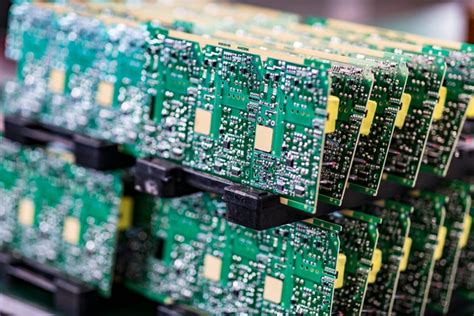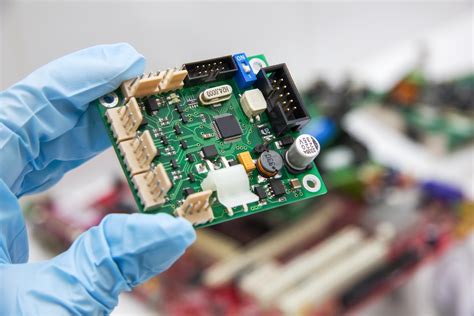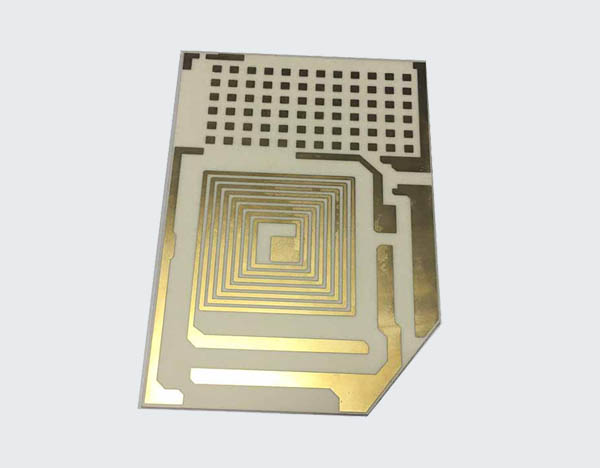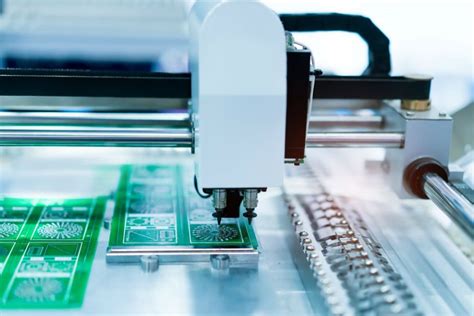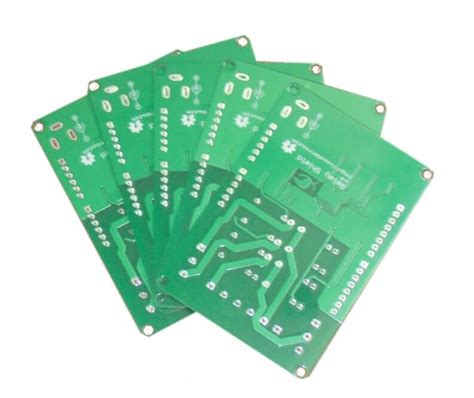IQ PCB Manufacturer Integrated Design & Production Solutions
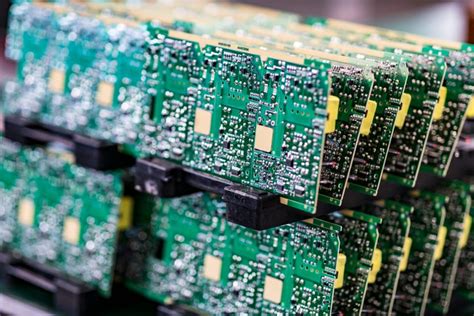
Key Takeaways
When navigating the complexities of PCB manufacturing, partnering with a provider that integrates design and production can significantly streamline your workflow. Leading PCB manufacturing companies like IQ PCB Manufacturer eliminate fragmented processes by merging electronic circuit design, PCB processing, and assembly services under one roof. This holistic approach reduces PCB manufacturing cost by minimizing delays, material waste, and communication gaps between teams.
Tip: Always evaluate whether your PCB manufacturing business partner offers end-to-end traceability. This ensures consistent quality from prototyping to final assembly.
By leveraging advanced technologies and over a decade of expertise, integrated providers optimize both speed and precision. For instance, design-for-manufacturability (DFM) checks are embedded early in the process, preventing costly revisions later. Additionally, automated assembly lines and rigorous testing protocols ensure reliability, even for high-volume orders.
"Choosing a single-source partner isn’t just about convenience—it’s about aligning innovation with scalability."
Whether you’re developing consumer electronics or industrial systems, integrated solutions future-proof your projects against evolving PCB manufacturing demands. From reducing PCB manufacturing cost to accelerating time-to-market, the right partner transforms complexity into competitive advantage.
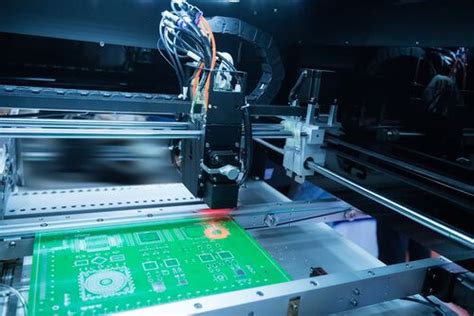
Integrated Design-to-Production Solutions in PCB Manufacturing
When you partner with a PCB manufacturing company that offers integrated design-to-production solutions, you streamline the entire lifecycle of your electronic projects. These providers bridge the gap between conceptual design and physical assembly, ensuring seamless transitions at every stage. By merging electronic circuit design expertise with advanced PCB processing capabilities, they eliminate communication barriers between engineers and manufacturers, reducing errors and accelerating time-to-market.
For businesses focused on optimizing PCB manufacturing cost, integrated solutions are a game-changer. Traditional workflows often involve multiple vendors for design, prototyping, and assembly—a fragmented approach that inflates expenses through rework and delays. In contrast, a unified PCB manufacturing business model leverages in-house tools and cross-functional teams to identify cost-saving opportunities early, such as material selection or panelization strategies. This proactive approach minimizes waste and ensures your project stays within budget without compromising quality.
The table below highlights key advantages of integrated solutions compared to traditional methods:
| Aspect | Traditional Approach | Integrated Design-to-Production |
|---|---|---|
| Design Iteration Time | Weeks (external coordination) | Days (collaborative in-house teams) |
| Cost Efficiency | Higher (multiple vendor markups) | Optimized (unified pricing) |
| Error Detection | Late-stage (post-prototype) | Early (real-time design validation) |
| Scalability | Limited by vendor capacity | Flexible (end-to-end control) |
Leading PCB manufacturing companies also prioritize real-time collaboration, enabling you to refine designs iteratively using simulation tools and automated feedback loops. For instance, impedance mismatches or thermal hotspots can be resolved during the design phase, avoiding costly post-production fixes. Moreover, integrated providers often offer prototyping-as-a-service, allowing you to test concepts rapidly before committing to full-scale production.
Since 2011, innovators have relied on these holistic solutions to tackle complex challenges—from high-density interconnect (HDI) boards to rigid-flex designs. Whether you’re scaling a startup or optimizing an enterprise supply chain, a PCB manufacturing partner with end-to-end expertise ensures your vision transitions smoothly from schematic to soldered assembly.
By consolidating workflows under one roof, you gain agility in a competitive market while maintaining tight control over PCB manufacturing cost and quality. The future of electronics demands not just precision but adaptability—traits embedded in every integrated design-to-production pipeline.
The Evolution of PCB Manufacturing: From Concept to Assembly
The journey of PCB manufacturing has transformed dramatically over the decades, shifting from fragmented workflows to cohesive, integrated systems. In the past, designing a printed circuit board involved disjointed steps—conceptualizing schematics, outsourcing prototyping, and coordinating with multiple PCB manufacturing companies for fabrication and assembly. Today, advancements in technology and processes enable a seamless transition from design to production, minimizing errors and accelerating time-to-market. Modern PCB manufacturing leverages automated design tools, precision etching, and multilayer stacking to meet complex requirements while optimizing PCB manufacturing cost.
Central to this evolution is the integration of electronic circuit design with fabrication and assembly. By merging these stages, PCB manufacturing businesses eliminate communication gaps, reduce material waste, and ensure design intent is preserved throughout production. For instance, iterative prototyping now occurs in-house, allowing engineers to validate designs in real time. This approach not only cuts PCB manufacturing cost but also enhances scalability for high-volume orders. Additionally, advancements in surface-mount technology (SMT) and through-hole assembly have refined the final product’s reliability, critical for industries like aerospace or medical devices.
The rise of one-stop solutions has further streamlined innovation. Instead of managing multiple vendors, you can now partner with a single provider offering end-to-end services—from concept validation to final assembly. This consolidation reduces logistical overhead and ensures consistency in quality. For example, integrated providers use unified software platforms to simulate manufacturability during the design phase, flagging potential issues before they escalate. Such foresight lowers PCB manufacturing cost while improving yield rates.
Ultimately, the evolution of PCB manufacturing reflects a broader trend toward efficiency and collaboration. By adopting integrated workflows, companies deliver robust solutions faster and at competitive costs, ensuring your projects stay ahead in a rapidly evolving market.

Core Services: Electronic Circuit Design and PCB Processing Expertise
When you partner with a PCB manufacturing provider that integrates design and production, you gain access to end-to-end expertise that simplifies complex workflows. Leading PCB manufacturing companies prioritize seamless collaboration between electronic circuit design and fabrication, ensuring your prototypes or high-volume orders align precisely with technical specifications. Their design teams leverage advanced tools to optimize layouts for signal integrity, thermal management, and manufacturability, minimizing PCB manufacturing cost while maximizing performance.
The PCB processing phase begins with rigorous material selection, followed by precision etching, layering, and drilling to create multi-layered boards tailored to your application—whether it’s consumer electronics, automotive systems, or industrial controls. Advanced PCB manufacturing business models also incorporate automated optical inspection (AOI) and electrical testing at every stage, catching defects early to reduce waste and delays. For assembly, surface-mount technology (SMT) and through-hole techniques are applied to securely place components, ensuring reliability under demanding conditions.
By consolidating design, fabrication, and assembly under one roof, these providers eliminate communication gaps between teams, accelerating time-to-market. You avoid the hassle of coordinating multiple vendors, which often leads to misalignments and inflated costs. Instead, a unified approach ensures design intent is preserved throughout production, whether you’re iterating a prototype or scaling for mass manufacturing. This integration is particularly valuable for balancing PCB manufacturing cost with quality, as economies of scale and in-house expertise drive efficiency without compromising on precision.
Moreover, trusted PCB manufacturing companies adhere to international standards like IPC-A-600 and ISO 9001, guaranteeing consistent quality across batches. Their technical support teams work closely with you to refine designs for manufacturability, suggest cost-saving alternatives, and troubleshoot challenges—turning complex requirements into actionable solutions. Whether you’re a startup navigating your first production run or an enterprise optimizing supply chains, this end-to-end expertise ensures your projects stay on track, on budget, and ahead of the curve.
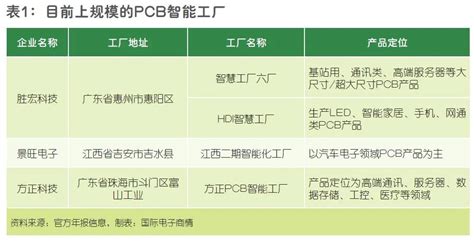
Streamlining Innovation with One-Stop PCB Production Services
When navigating the complexities of PCB manufacturing, you need a partner that bridges the gap between design and execution. Leading PCB manufacturing companies now offer integrated solutions that eliminate traditional barriers between prototyping, fabrication, and assembly. By consolidating these stages under one roof, they streamline workflows, reduce PCB manufacturing cost, and accelerate time-to-market for your projects. This approach minimizes delays caused by fragmented supply chains, ensuring that design iterations translate seamlessly into functional boards without compromising quality.
For businesses managing a PCB manufacturing business, the value of such integration lies in its scalability. Whether you’re developing high-volume industrial systems or niche electronics, a unified process reduces overheads linked to coordinating multiple vendors. Advanced design tools paired with automated production lines enable precise control over material usage, layer alignment, and component placement—key factors in optimizing both performance and cost-efficiency. Real-time collaboration between engineers and manufacturers further ensures that design flaws are identified early, preventing costly revisions later.
Cost management remains a critical concern in PCB manufacturing, and integrated services address this by offering transparent pricing models. By controlling every stage—from substrate selection to final testing—providers can mitigate risks like material waste or assembly errors that inflate expenses. Additionally, economies of scale achieved through bulk purchasing and optimized logistics directly benefit your bottom line.
Innovation thrives when you’re free to focus on creativity rather than logistics. With end-to-end solutions, you gain access to cutting-edge technologies like high-density interconnect (HDI) designs and flexible PCBs, all while maintaining tight control over timelines and budgets. This holistic approach not only simplifies your workflow but also positions your projects to adapt swiftly to evolving industry standards or market demands.
In essence, partnering with a full-service PCB manufacturing expert transforms complexity into clarity, empowering you to deliver robust, reliable electronics without the traditional headaches of fragmented production.
Quality Assurance in Modern PCB Fabrication and Assembly
In today’s competitive landscape of PCB manufacturing, ensuring consistent quality is non-negotiable. Leading PCB manufacturing companies prioritize rigorous quality assurance (QA) protocols to bridge the gap between design intent and final product performance. Advanced inspection tools like automated optical inspection (AOI) and X-ray imaging are now standard, enabling precise detection of defects such as micro-cracks, misaligned components, or soldering irregularities. These technologies minimize costly rework and ensure your designs meet industry standards, from prototype validation to high-volume production.
Balancing PCB manufacturing cost with quality requires a strategic approach. Reputable manufacturers optimize processes—like material selection and panel utilization—to reduce waste without compromising reliability. For instance, thorough electrical testing (e.g., flying probe or in-circuit testing) validates functionality early, preventing downstream failures. By integrating QA into every stage—design review, fabrication, and assembly—you mitigate risks that could escalate expenses or delay timelines.
For a PCB manufacturing business, building trust hinges on transparency and compliance. Certifications like ISO 9001 and IPC-A-610 underscore a commitment to excellence, while traceability systems track each batch’s journey from raw materials to finished boards. This accountability is critical for industries like aerospace or medical devices, where component failures carry significant consequences.
Modern QA also addresses evolving challenges, such as managing tighter tolerances in high-density interconnect (HDI) designs or ensuring thermal stability in high-power applications. Partnering with a manufacturer that invests in continuous process improvement ensures your projects stay ahead of technical demands. Ultimately, robust quality assurance isn’t just about avoiding defects—it’s about delivering durable, high-performance PCBs that align with your innovation goals and market expectations.
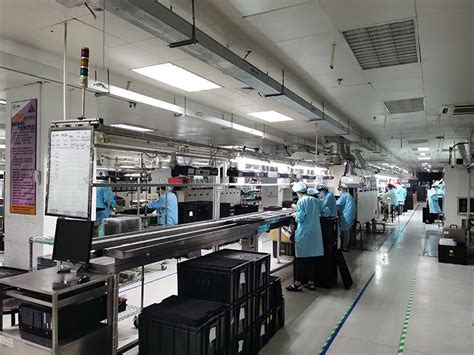
Case Studies: Successful PCB Solutions Since 2011
When you partner with PCB manufacturing companies that prioritize end-to-end integration, the results speak for themselves. Since 2011, IQ PCB Manufacturer has demonstrated how aligning design innovation with precision production can overcome complex challenges. Take, for example, a client in the automotive sector that needed a high-reliability control module. By leveraging PCB manufacturing expertise early in the design phase, the team optimized component placement to reduce signal interference, slashing PCB manufacturing cost by 18% while maintaining stringent quality standards.
Another case involved a medical device startup requiring rapid prototyping for a compact sensor board. Traditional PCB manufacturing business models often separate design and fabrication, leading to delays. Here, the integrated design-to-production model enabled real-time adjustments during prototyping stages, cutting development time by 30%. This approach not only accelerated time-to-market but also minimized material waste—a critical factor in managing PCB manufacturing cost for small-batch projects.
In telecommunications, a client faced signal integrity issues in a multi-layer PCB for 5G infrastructure. Through collaborative troubleshooting and advanced simulation tools, the team identified parasitic capacitance hotspots, redesigning the stack-up to enhance performance. The solution reduced post-production rework by 22%, showcasing how PCB manufacturing companies that unify design and production can solve even the most nuanced technical hurdles.
These examples highlight a recurring theme: seamless integration eliminates bottlenecks. Whether you’re scaling a PCB manufacturing business or refining a niche product, aligning every stage—from schematic capture to assembly—ensures consistency, reduces overhead, and fosters innovation. By addressing challenges holistically, you gain a partner capable of turning conceptual complexity into reliable, cost-effective reality.

Future Trends in Integrated PCB Design and Manufacturing Technologies
As the PCB manufacturing industry evolves, staying ahead means embracing trends that merge design innovation with production efficiency. Leading PCB manufacturing companies are now integrating AI-driven tools to optimize design accuracy and reduce prototyping cycles, ensuring faster time-to-market for your projects. Advanced automation in fabrication lines is lowering PCB manufacturing cost, enabling businesses to allocate resources toward R&D or scaling operations. For instance, smart factories leverage IoT-enabled systems to monitor real-time production metrics, minimizing errors and material waste—a critical advantage in the competitive PCB manufacturing business.
Another emerging trend is the adoption of sustainable practices, such as using eco-friendly substrates and energy-efficient processes, to align with global environmental standards. This shift not only reduces operational footprints but also appeals to clients prioritizing green solutions. Additionally, modular design frameworks are gaining traction, allowing you to customize PCB manufacturing workflows for applications like high-frequency circuits or compact IoT devices.
The rise of additive manufacturing (3D printing) for rapid prototyping is transforming how PCB manufacturing companies approach complex geometries, offering unparalleled flexibility in testing designs before full-scale production. Meanwhile, advancements in embedded component technology are shrinking board sizes while enhancing functionality—ideal for industries like wearables or aerospace.
To remain competitive, forward-thinking players in the PCB manufacturing business are investing in unified software platforms that bridge design, simulation, and production stages. These tools enable seamless collaboration across teams, ensuring that cost-efficiency and quality are maintained from concept to assembly. By leveraging these trends, you can future-proof your projects while navigating the dynamic landscape of PCB manufacturing innovation.
Conclusion
When selecting a partner for PCB manufacturing, it’s essential to choose a company that bridges the gap between design and execution. PCB manufacturing companies like IQ PCB Manufacturer exemplify this by offering integrated solutions that streamline workflows, reduce PCB manufacturing cost, and accelerate time-to-market. By combining expertise in electronic circuit design, fabrication, and assembly under one roof, they eliminate the friction of coordinating multiple vendors—a common challenge in the PCB manufacturing business.
Since 2011, their approach has redefined how industries approach prototyping and mass production. Whether you’re optimizing for PCB manufacturing cost or prioritizing precision in high-volume runs, a partner with end-to-end capabilities ensures consistency and scalability. Advanced technologies, such as automated assembly and rigorous quality checks, further enhance reliability, making them a strategic choice for industries ranging from consumer electronics to aerospace.
For businesses navigating the complexities of PCB manufacturing, the key lies in balancing innovation with practicality. By leveraging unified design-to-production frameworks, you not only mitigate risks but also unlock opportunities for iterative improvements. As the industry evolves, partnering with forward-thinking PCB manufacturing companies ensures your projects stay ahead of technical and market demands. In an era where agility defines success, integrated solutions are no longer a luxury—they’re a necessity.
FAQs
What services do integrated PCB manufacturing companies typically offer?
Integrated PCB manufacturing providers like IQ PCB Manufacturer handle everything from electronic circuit design to PCB processing and final assembly. This includes prototyping, material selection, quality testing, and logistics, ensuring a seamless transition from concept to finished product.
How does working with a one-stop PCB manufacturing business benefit you?
By partnering with a full-service provider, you eliminate the need to coordinate with multiple vendors, reduce lead times, and minimize errors. This streamlined approach lowers overall PCB manufacturing cost while accelerating time-to-market for your innovations.
What factors influence PCB manufacturing cost?
Costs depend on design complexity, material choices (e.g., high-frequency or flexible substrates), layer count, turnaround time, and order volume. Opting for a provider with in-house design expertise helps optimize these variables early in the process.
Why choose IQ PCB Manufacturer over other PCB manufacturing companies?
With over a decade of experience since 2011, IQ PCB combines advanced PCB manufacturing technologies with end-to-end oversight. Their integrated model ensures consistent quality, reduces supply chain risks, and offers scalable solutions tailored to your project’s needs.
How do you ensure quality in PCB fabrication and assembly?
Rigorous testing protocols, including automated optical inspection (AOI), X-ray analysis, and functional testing, are applied at every stage. Compliance with international standards like ISO and IPC further guarantees reliability and performance.
Can you handle both low-volume prototyping and high-volume production?
Yes. Whether you’re iterating a prototype or scaling for mass production, IQ PCB’s flexible PCB manufacturing business model adapts to your requirements, maintaining precision and efficiency across all order sizes.
Ready to Simplify Your PCB Project?
Explore how IQ PCB Manufacturer’s integrated solutions can streamline your workflow. For a detailed consultation or quote, please click here.

